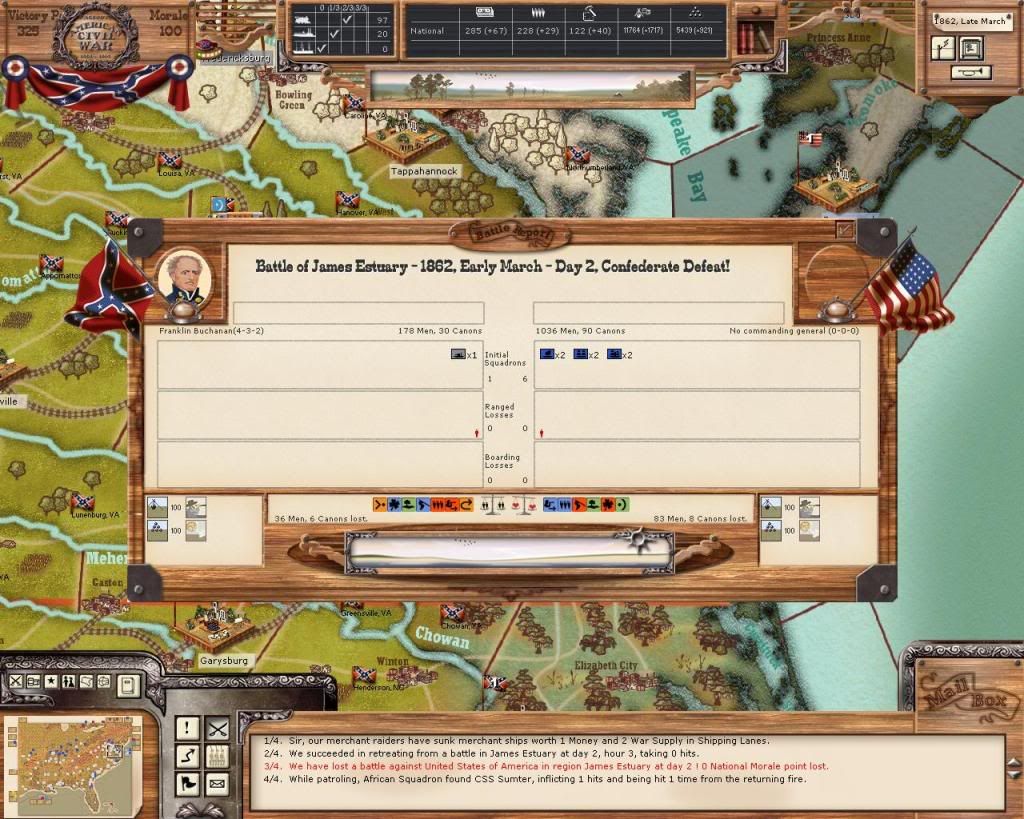Captain_Orso wrote:The way things are now, there is no way to recreate historical attacks on forts using gunboats or blue-water fleets
I am not as familiar with the Mississippi River campaigns, but in the Atlantic theater gunboats, and ironclads in particular, were not directly effective against land fortifications.
One example of this ineffectiveness is Drewry's Bluff. Among many problems the Union fleet faced in this battle was the
Monitor's inability to elevate her guns high enough to target Fort Darling.
Another is the First Battle of Charleston Harbor. The Union ironclads committed to the attack took a pounding, but relative to their opponents only carried a handful of guns and found themselves unable to match the firepower of Confederate shore batteries. The battle was a disaster, as
New Ironsides barely escaped a mine explosion and
Keokuk ultimately sank from damage suffered during the attack, including 19 shots below the waterline.
This touches on another major problem ironclads faced. All were only heavily ironclad, if ironclad at all, above the waterline. As they expended ammuntion they became lighter, exposing the wooden or thinner plated areas of the ship to enemy fire. This is one of the reasons that
Virginia disengaged from
Monitor at Hampton Roads.
As I said in an
earlier post, I think that the ship-fort relationship should be looked at if/when another Civil War game is developed, but ironclads played, and should simulate, a bit different role than the traditional ship.
To best recreate history, Confederate players should be able to invest in ironclads that present a mortal threat to any Union blockade strategy, and Union players should be able to check that move with their own ironclads that can keep the blockade in place. John Ericsson gave the
Monitor its name because it was supposed to "monitor" the blockade. Defensive in nature, this was the Union Navy's strategic vision for ironclads and was reflected in both the strategic and tactical roles they played in the Civil War.
Ideally, I think an ironclad unit/element would be
a) offensively deadly against wooden ship elements
b) be able to defend wooden ship elements from another ironclad
c) stalemated with an ironclad element of equal power
d) ineffective at shore/fort bombardments



